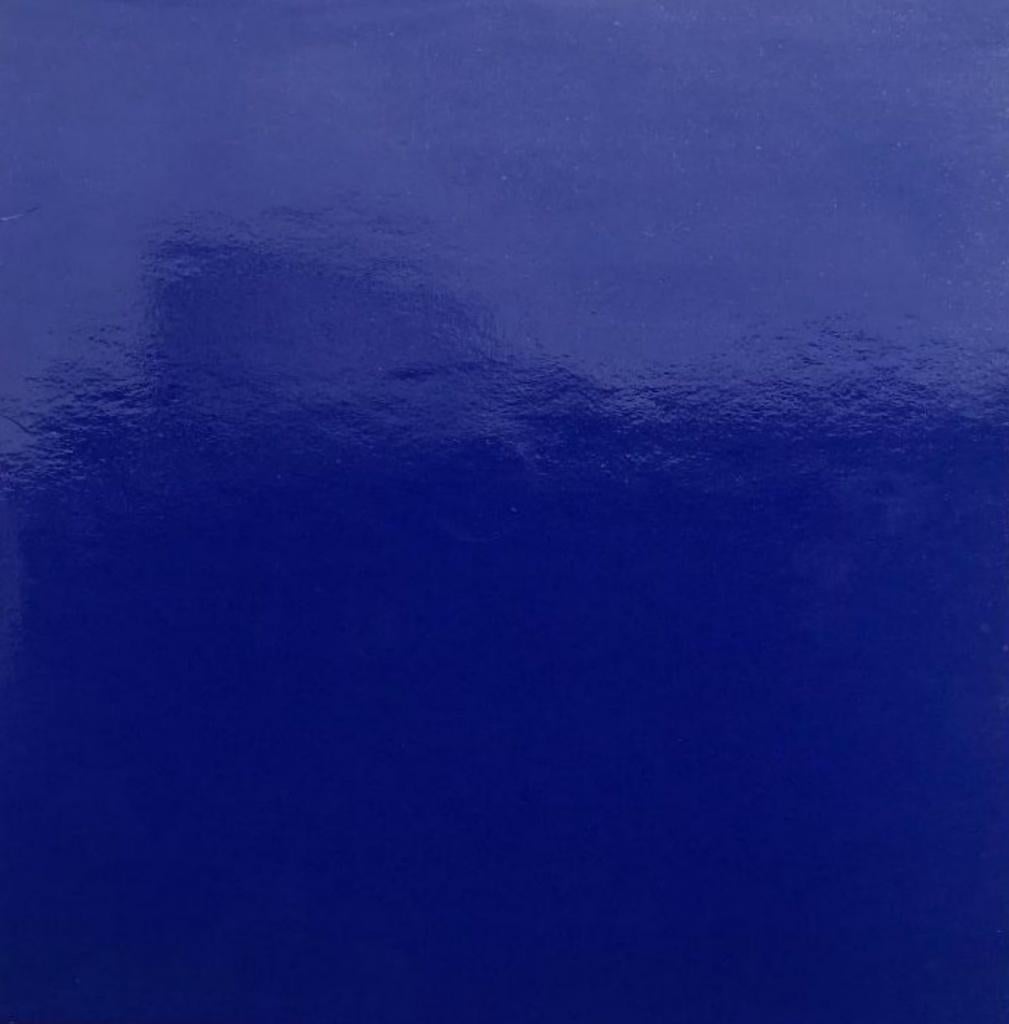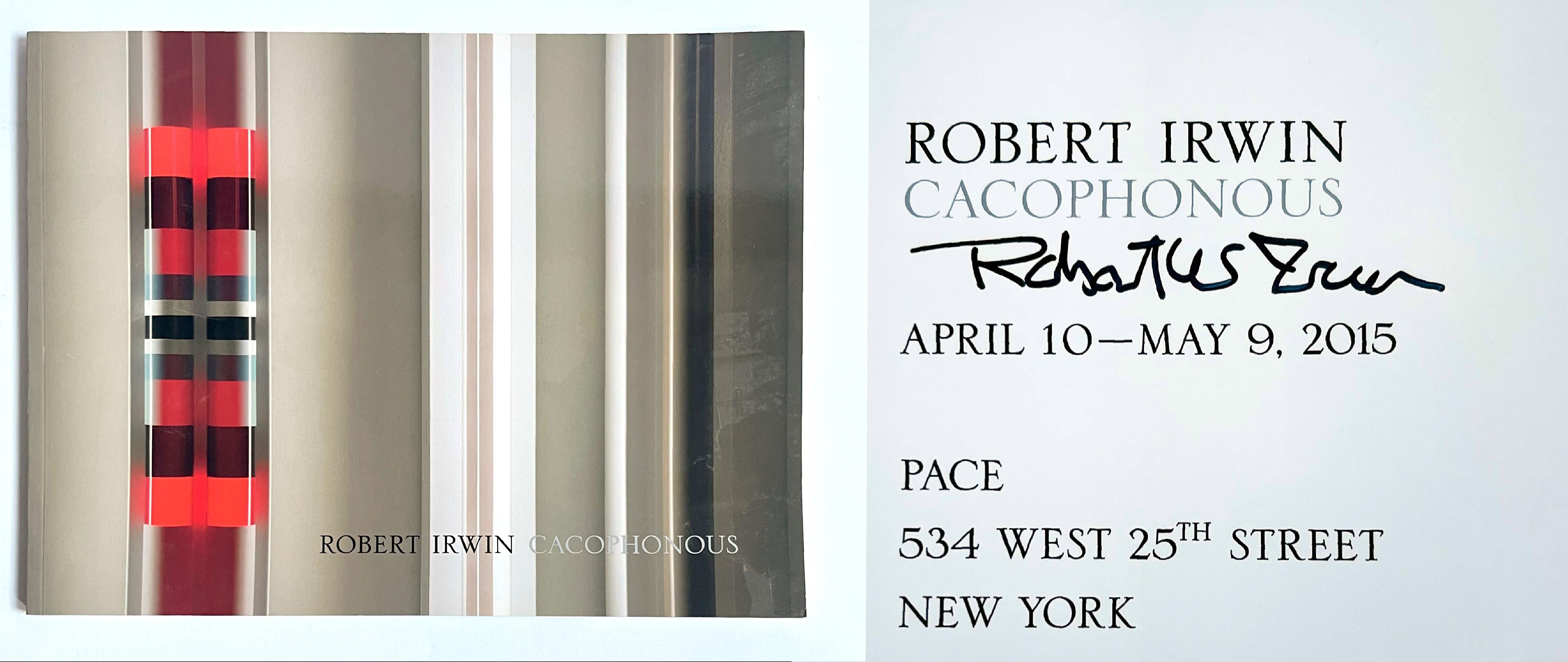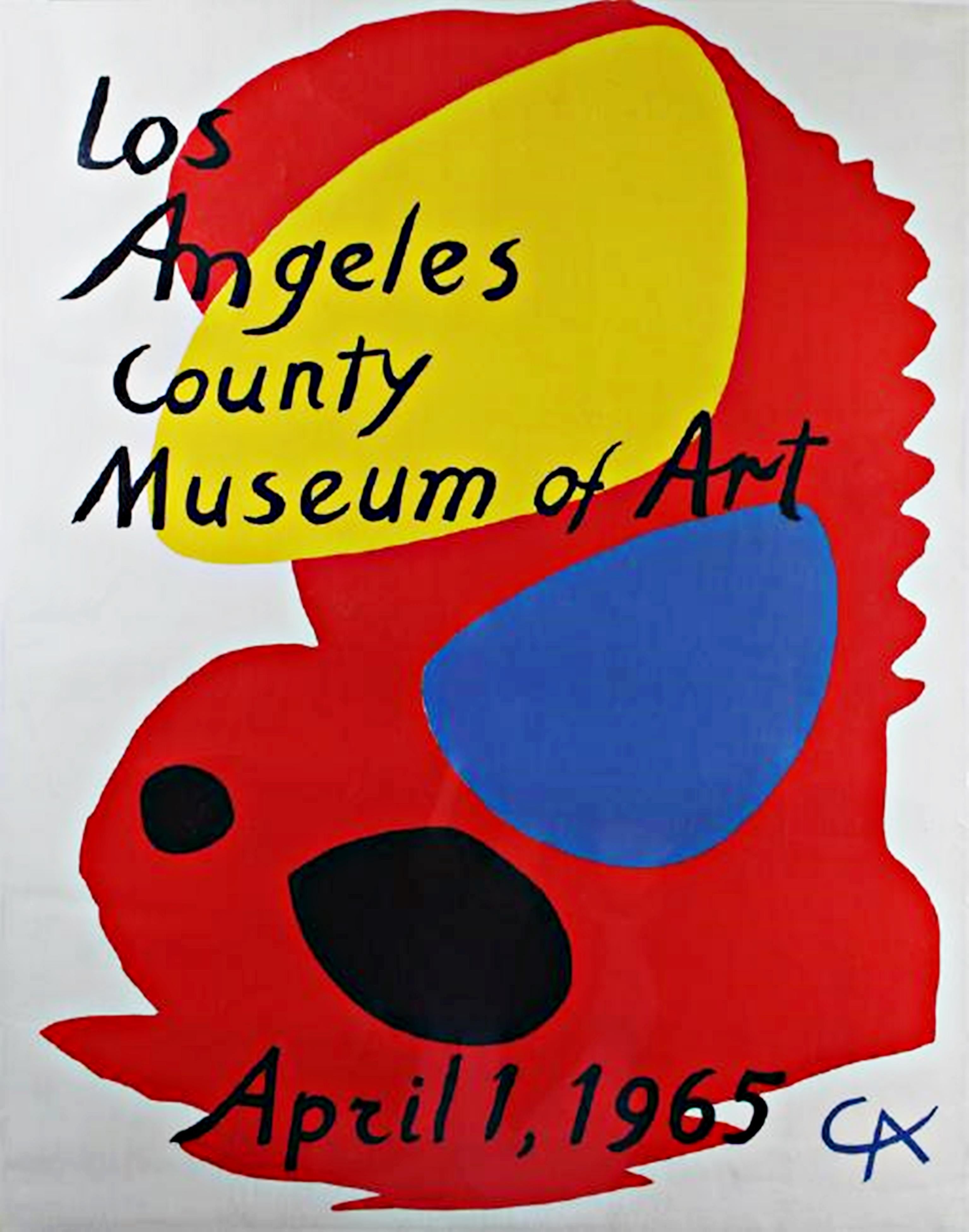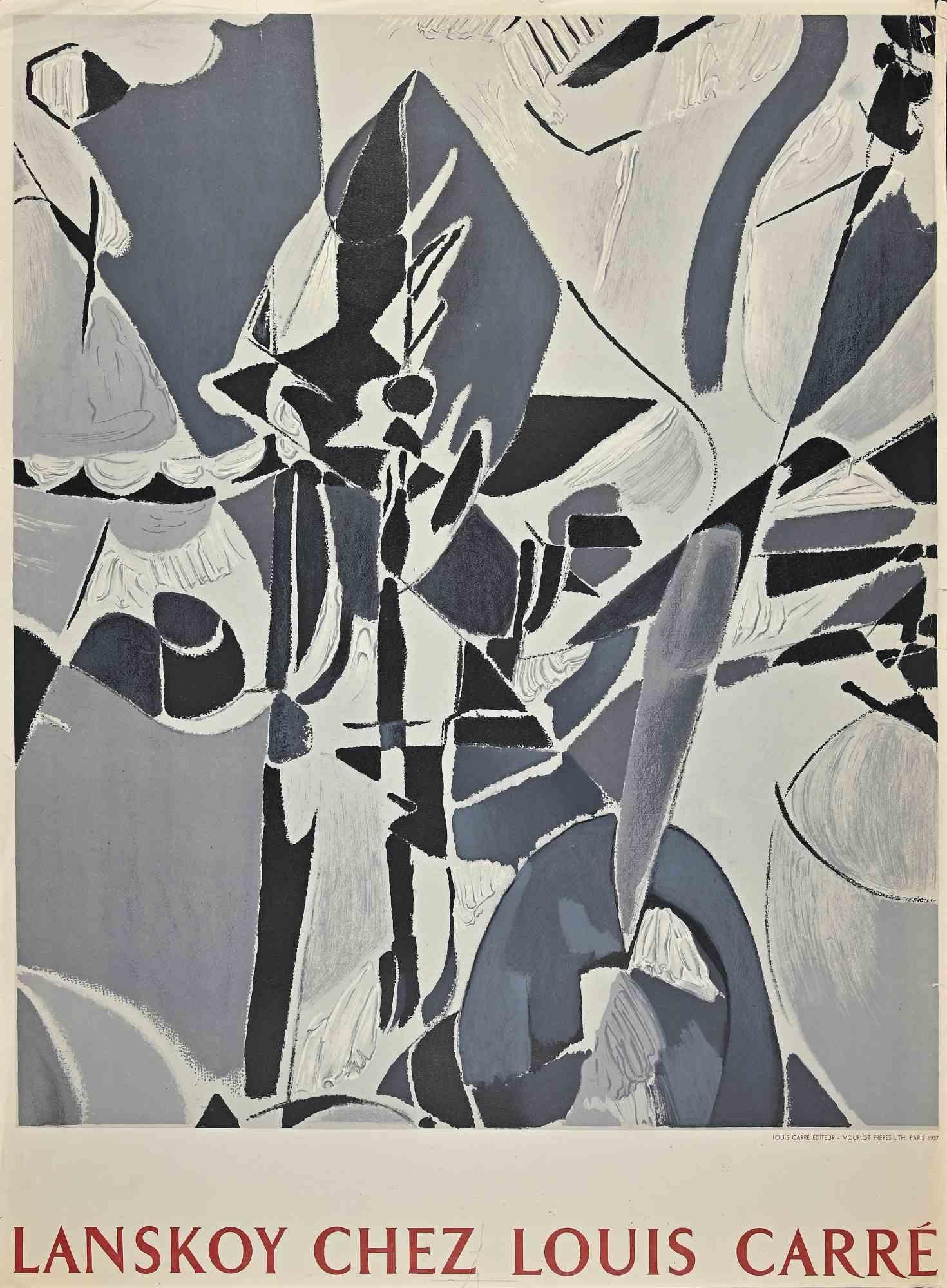Yves KleinYves Klein Propositions Monochromes Invite with IKB (International Klein Blue)1957
1957
About the Item
- Creator:Yves Klein (1928 - 1962, French)
- Creation Year:1957
- Dimensions:Height: 8.25 in (20.96 cm)Width: 11.75 in (29.85 cm)
- Medium:
- Movement & Style:
- Period:
- Condition:In good, stable vintage condition with expected folds, as issued. The IKB (International Klein Blue) color remains striking.
- Gallery Location:New York, NY
- Reference Number:1stDibs: LU1745213258722
Yves Klein
French artist Yves Klein is best known for his trademark ultramarine pigment, which he patented as International Klein Blue in 1961. “Blue … is beyond dimensions, whereas the other colors are not,” he said.
“All colors arouse specific ideas, while blue suggests at most the sea and the sky; and they, after all, are in actual, visible nature what is most abstract.”
Starting in the mid-1950s, Klein made retinal blue monochrome paintings (which would prove cornerstones of Minimalism) and the pigment would also feature prominently in his Anthropometry paintings, for which Klein smeared nude women with blue pigment and used them as human brushes on canvas, sometimes in elaborate public performances. Klein's work anticipated Conceptual art, performance art and environmental art, as in his selling of portions of empty space to collectors. For The Void (1958), he presented an empty gallery as an artwork, wearing a white tie and tails to show visitors around the blank walls.
Find authentic Yves Klein sculptures, prints and other art on 1stDibs.
- ShippingRetrieving quote...Ships From: New York, NY
- Return PolicyA return for this item may be initiated within 1 day of delivery.
- La Conférence à la Sorbonne, 3 Juin, 1959, Lt Ed Silkscreen cover record albumsBy Yves KleinLocated in New York, NYYves Klein La Conférence à la Sorbonne, 3 Juin, 1959, 1959-1963 Two 12-inch vinyl records held in gatefold sleeve with silkscreen cover jacket in IKB International Klein Blue...Category
1960s Modern Abstract Prints
MaterialsPlastic, Mixed Media, Screen, Offset, Pencil, Board, Lithograph
- Cacophonous PACE Gallery exhibition catalogue (hand signed by Robert Irwin)By Robert IrwinLocated in New York, NYRobert Irwin Cacophonous (hand signed by Robert Irwin), 2015 Softback exhibition catalogue with stiff wraps (hand signed by Robert Irwin) Hand signed by Robert Irwin on the title pag...Category
2010s Contemporary More Art
MaterialsPaper, Ink, Mixed Media, Lithograph, Offset, Screen
- The original limited edition 1965 Los Angeles County Museum of Art LACMA posterBy Alexander CalderLocated in New York, NYAlexander Calder The original Los Angeles County Museum of Art poster, 1965 Limited Edition vintage Offset Lithograph 32 × 24 3/4 inches 81.3 × 62.9 cm Edition of 300 This is the OR...Category
1960s Modern Abstract Prints
MaterialsLithograph, Offset
- Historic Yves Klein at Dwan Gallery exhibition invitation Mid Century ModernBy Yves KleinLocated in New York, NYWell documented work, illustrated in the National Gallery of Art, Smithsonian Institution hardcover exhibition monograph. Yves Klein at Dwan Gallery Po...Category
1960s Modern Abstract Prints
MaterialsLithograph, Offset
- RAUSCHENBERG (Scarce and collectible early exhibition invitation)By Cris GianakosLocated in New York, NYCris Gianakos, Robert Rauschenberg RAUSCHENBERG (Scarce and collectible early invitation), 1970 Offset Lithograph Invitation 8 7/10 × 11 9/10 inches Unframed Offset lithograph invitation created on the occasion of Robert Rauschenberg's exhibition at SVA's Visual Arts Gallery in 1970. The poster was designed by Cristos Gianakos, with Rauschenberg's approval, who was also a professor at SVA, and the show was curated by Felice Wender, the director of Dayon's Gallery 12 in Minneapolis. The invitation states that "after completing its New York debut, the show will open at the School of the Art Institute of Chicago in January 4...Category
1970s Modern Abstract Prints
MaterialsLithograph, Offset
- Dubuffet: The Museum of Modern Art vintage poster mid century modern abstractBy Jean DubuffetLocated in New York, NYJean Dubuffet Dubuffet: The Museum of Modern Art vintage poster, 1962 Offset lithograph poster 19 1/2 × 15 inches Unframed with original folds (it was de...Category
1960s Modern Abstract Prints
MaterialsLithograph, Offset
- Vintage Original Poster Sister Corita Kent Lithograph Pop Art "Life Without War"By Mary Corita (Sister Corita) KentLocated in Surfside, FLCorita Kent (American, 1918 - 1986)"We Can Create Life without War" Corita Billboard Peace Project Poster 1985 Corita Billboard Event - Part of Peace Week, January 17-24, 1985 San Lu...Category
1980s Pop Art Abstract Prints
MaterialsLithograph, Screen, Offset
- Large Johnny Friedlaender Poster Print No TextBy Johnny FriedlaenderLocated in Surfside, FLJohnny Friedlaender (26 December 1912 – 18 June 1992) was a leading 20th-century artist, whose works have been exhibited in Germany, France, Netherlands, Italy, Japan and the United States. He has been influential upon other notable artists, who were students in his Paris gallery. His preferred medium of aquatint etching is a technically difficult artistic process, of which Friedlaender has been a pioneer. Gotthard Johnny Friedlaender was born in Pless (Pszczyna), Prussian Silesia, as the son of a pharmacist. He was graduated from the Breslau (Wrocław) high school in 1922 and then attended the Academy of Arts (Akademie der Bildenden Kunste) in Breslau, where he studied under Otto Mueller. He graduated from the Academy as a master student in 1928. In 1930 he moved to Dresden where he held exhibitions at the J. Sandel Gallery and at the Dresden Art Museum. He was in Berlin for part of 1933, and then journeyed to Paris. After two years in a Nazi concentration camp, he emigrated to Czechoslovakia, where he settled in Ostrava, where he held the first one-man show of his etchings. In 1936 Friedlaender journeyed to Czechoslovakia, Switzerland, Austria, France and Belgium. At the Hague he held a successful exhibition of etchings and watercolours. He fled to Paris in 1937 as a political refugee of the Nazi regime with his young wife, who was an actress. In that year he held an exhibition of his etchings which included the works: L ‘Equipe and Matieres et Formes. From 1939 to 1943 he was interned in a series of concentration camps, but survived against poor odds. After freedom in 1944 Friedlaender began a series of twelve etchings entitled Images du Malheur with Sagile as his publisher. In the same year he received a commission to illustrate four books by Freres Tharaud of the French Academy. In 1945 he performed work for several newspapers including Cavalcade and Carrefour. In the year 1947 he produced the work Reves Cosmiques and in that same year he became a member of the Salon de Mai, which position he held until 1969. In the year 1948 he began a friendship with the painter Nicolas de Staël and held his first exhibition in Copenhagen at Galerie Birch. The following year he showed for the first time in Galerie La Hune in Paris. After living in Paris for 13 years, Friedlaender became a French citizen in 1950. Friedlaender expanded his geographic scope in 1951 and exhibited in Tokyo in a modern art show. In the same year he was a participant in the XI Trienale in Milan, Italy. By 1953 he had produced works for a one-man show at the Museum of Neuchâtel and exhibited at the Galerie Moers in Amsterdam, the II Camino Gallery in Rome, in São Paulo, Brazil and in Paris. He was a participant of the French Italian Art Conference in Turin, Italy that same year. Friedlaender accepted an international art award in 1957, becoming the recipient of the Biennial Kakamura Prize in Tokyo. In 1959 he received a teaching post awarded by UNESCO at the Museum of Modern Art in Rio de Janeiro. By 1968 Friedlaender was travelling to Puerto Rico, New York City and Washington, D.C. to hold exhibitions. That year he also purchased a home in the Burgundy region of France. 1971 was another year of diverse international travel including shows in Bern, Milan, Paris, Krefeld and again New York. In the latter city he exhibited paintings at the Far Gallery, a venue becoming well known for its patronage of important twentieth-century artists. From his atelier in Paris Friedlaender instructed younger artists who themselves went on to become noteworthy, among them Arthur Luiz Piza, Brigitte Coudrain...Category
Mid-20th Century Modern Abstract Prints
MaterialsOffset, Screen
- Vintage Poster Galerie Louis Carré - Lithograph and offset by A. Lanskoy - 1957By André LanskoyLocated in Roma, ITVintage Poster Galerie Louis Carré is a lithograph and offset print realized by André Lanskoy in 1957. Good conditions except for slight cutting and foldi...Category
1950s Modern Abstract Prints
MaterialsLithograph, Offset
- DEMOCRATIC PARTY HUMAN RIGHTS DINNERBy Robert RauschenbergLocated in Aventura, FLOffset lithograph on hodgkins handmade paper. Hand signed and numbered in pencil by the artist. Certificate of authenticity included. Edition of 100. Framed. All reasonable offers w...Category
1980s Modern Abstract Prints
MaterialsHandmade Paper, Lithograph, Offset
- Toreros (4 Original Lithographs by Pablo Picasso and Jamie Sabartes)By Pablo PicassoLocated in New York, NYSabartes, Jaime Picasso – Toreros with four original lithographs Publisher: New York & Paris: George Braziller & Andre Sauret, 1961. First edition. Ha...Category
1960s Modern Mixed Media
MaterialsOffset, Lithograph
- Gothic Wood - Offset and Lithograph - Early 20th CenturyLocated in Roma, ITGothic Wood Inlays is an original print on paper realized in offset and lithograph techniques in the early 20th Century. Included a Passepartout: 49x 34 ...Category
Early 20th Century Modern Abstract Prints
MaterialsOffset, Lithograph






